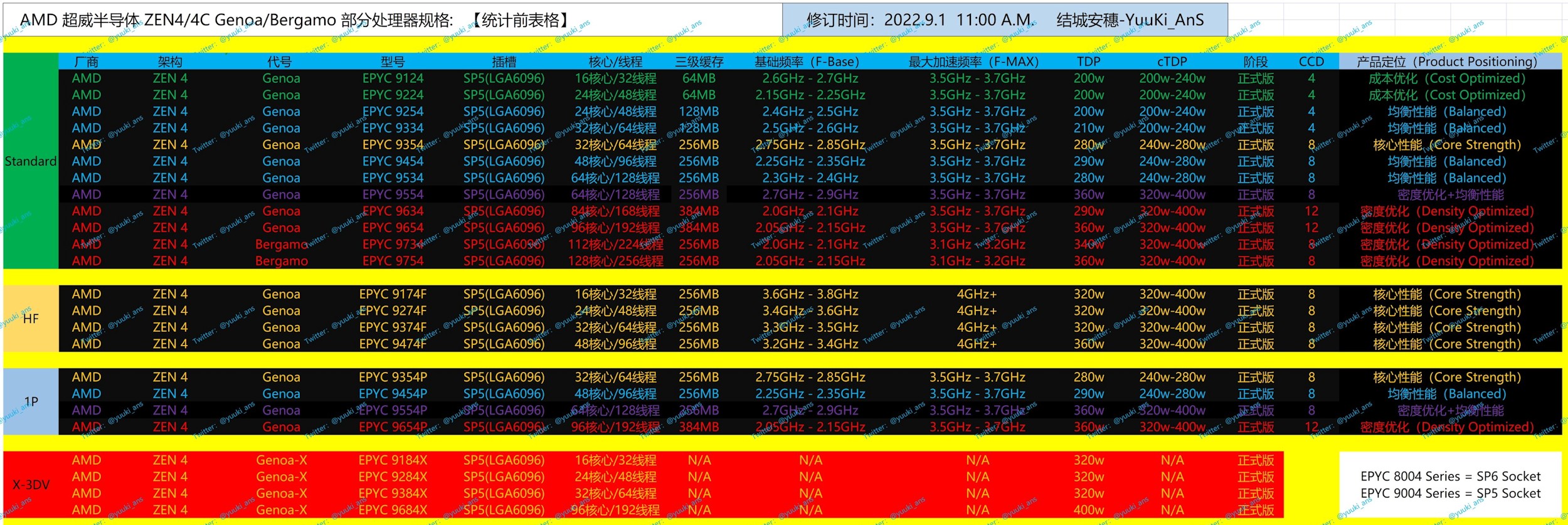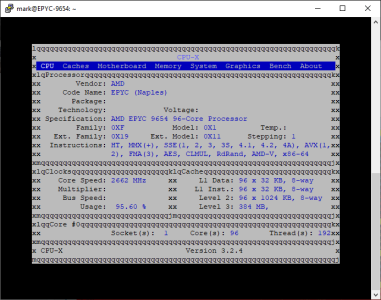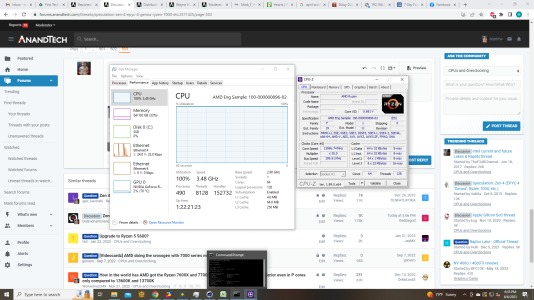Bud, nothing I said is incorrect. You were making a suggestion about ultimate performance and brought up a design that nukes half its cache for space. How the hell is that performance minded? You want performance you go full cache, no exceptions. in fact screw the small cores. Go a full fat 24 cores per die. I'm confident AMD can wrangle the power down and deliver a product that beats the snot out of Intel for the next decade.
Have you not seen the lower cache 7950X beat the 7950X3D in some productivity workloads like rendering? Not all workloads scale with cache which is why Zen4c exists in the 1st place and why Genoa-X is a separate product line.
A full fat 24 core part would need 3 CCDs and a new IO die with the current suite of parts.
Edit: and you are imprecise again. Zen4c halves the per CCX L3 cache but the overall CCD L3 amount stays the same.
Could take but won't take. Again this is all about money. to do this amd needs to drop their 8 core die and adopt a 8+16 die structure. This die structure should not half access to less cache as you suggested. It should have access to more cache from the getgo. You need to think performance here. Once you introduce higher core counts your die complexity goes up. Once complexity goes up your ability to get perfect dies goes down. AMD tuned their process based on how many dies they can save from the top to the bottom. It makes no sense to go about an approach that Intel did in the past. inte;s future approach is compute tiles/dies breaking the core count down into managable and affordable pieces, reducing complexity to reduce overhead costs. why would amd go the other direction now? this is a lot more work involved from manufacturing to validation to prepping. added time is loss of possible income.
Again, income income income income income. AMD won't sell a single ccd 8+16 on a x950 for cheap. See the launch price of the zen 4 variant, add another 300-400 to it. Why? AMD is offering you a high cache, 8+16 where both have smt and both have cache access. and offer avx512. why would they sell it for near the same price with all the work involved and extra steps in product manufacturing? money doesn't grow on trees.
Why do you think I am talking single CCD? I never once said single CCD. I always said that if AMD wanted a 24c option swapping out one of the 8c CCDs on the 7950X with the 16c Zen4c CCD would give them a desktop part that is unmatched in all core productivity performance. If the standard CCD had v-cache it would also be the best gaming CPU making such a part the ultimate all rounder.
AMDs approach has been to re-use the pieces in as many places as possible. Introducing Zen4c is adding a new die to the mix already and being able to use those dies in more products has been AMDs MO since Zen 1.
I expect if a part were to launch it would be expensive as all halo parts are.
AMD will already have considered using it in a Ryzen SKU as part of the Zen4c business case. Whether that is just reusing the CCX layout for APUs or if it extends to using the CCDs in a desktop part we have no idea. It is not something they would not factor in.
Threadrippers are bastardised epycs. they're also a high margin part. Think of threadripper as epyc lite. Everyone assumed the R9 would get the treatment because the R9 was the model Lisa Su was holding in her hand when she showed off 3d cache for the first time. a 5800x and 5800x3d are the same part with the latter getting 3d $ treatment. The msrp for the former is already high enough due to bom for the processor. the cache chip made at scale allows them to sell it to youi for a higher price recouping and some extra money for a higher msrp. the cache argument you presented is not matching to your earlier one where you argue about not having cache atop the magical 8+16.
Cache argument makes perfect sense. 1 8c Zen4 CCD with v-cache like already exist and 1 16c Zen4c CCD connected to the existing IO die.
I am not talking some single CCD with 8 Zen4 cores and 16 Zen4c cores in one chip. That would be dumb.
The BOM of such a Zen4 part would be about the same as the existing 7950X3D part which was able to slot in at the same MSRP as the 7950X launched at. This part could command a premium for having higher performance in all core workloads.








